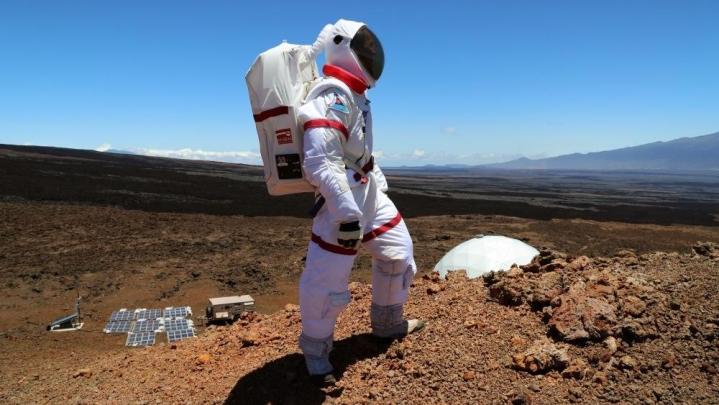
If you aren’t an astronaut or your name isn’t Elon Musk, Richard Branson, or “insert bazillionaire’s name here,” the chances of you traveling into outer space are pretty much zilch. While commercial space travel is imminent, it’ll be many decades before the hoi polloi can afford to travel in zero gravity. So as an alternative, you could head over to Hawaii and experience what long-term space travel would be like.
According to Jaunted, the University of Hawaii at Mānoa is looking for volunteers to participate in a series of space-exploration studies that will provide NASA the “essential information needed for long-duration space exploration missions,” like those to Mars one day. The studies will take place at the Hawaii Space Exploration Analog and Simulation (HI-SEAS) site, an isolated Mars-like environment 8,200 feet above sea level, on the slopes of Mauna Loa on the Big Island. Volunteers will live in the same habitat that was part of a NASA-funded Mars food study.
The research, says the University, aims to “test a hypothesis that group cohesion over the short term predicts team performance over the long term; observe how technical, social, and task roles evolve over long-duration missions; and establish baselines for a wide range of human cognitive, social, and emotional factors over missions of varying durations.”
Ready to sign up? The program is seeking a diverse age group between 21 and 65. However, applicants must be nonsmokers, be able to pass a flight physical exam, and communicate in English fluently. There are also some additional strict requirements per NASA that includes things like having an undergrad degree in science or engineering, or three years of experience or graduate study, etc. If chosen, the volunteer will be compensated, plus room and board.
If you’re interested, you only have until November 1, 2013 to register. Click here to find out more about the application process. And, even though it may not be real space, at least you’ll get to live in Hawaii for a while.
(Image via Angelo Vermeulen/HI-SEAS)
Editors' Recommendations
- NASA is operating its Mars Curiosity rover from workers’ home offices
- NASA lays out plans for building a long-term moon base
- 11 million names to be carried to Mars on NASA’s Perseverance rover
- NASA’s Perseverance rover almost ready for its trip to Mars
- If you’ve ever dreamed of becoming an astronaut, apply to NASA now


